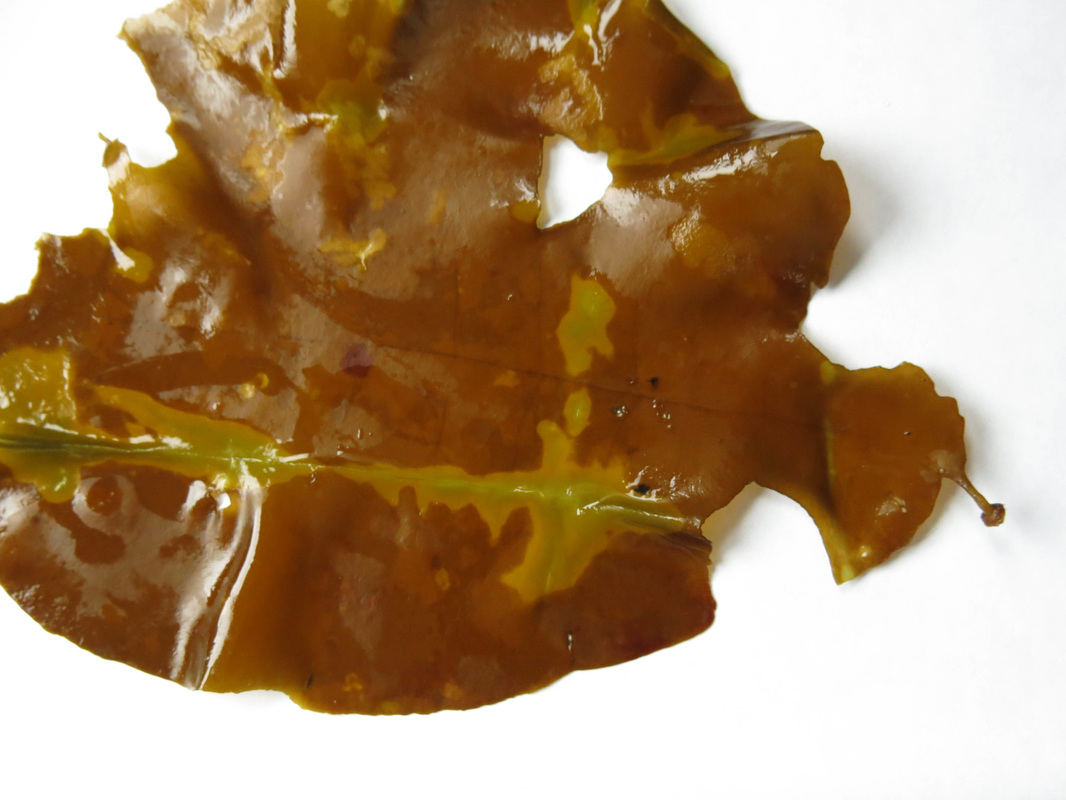Desmarestia dudresnayi ssp. foliaceae
Formerly known as Desmarestia folicacea, this annual brown seaweed has a thin, rounded blade with a faintly-visible central vein branching outward. It has a short stipe, and a small disc-shaped holdfast. Like other Desmarestia species — often aptly named "acid kelps" — the blade contains sulphuric acid that will cause the blade to discolour and degrade when exposed to air. Despite their common name and kelp-like appearance, Desmarestia species are not actually kelps.
This species is found in the low intertidal and subtidal of semi-protected to semi-exposed shorelines.
This species is found in the low intertidal and subtidal of semi-protected to semi-exposed shorelines.
References
Burt, J. and Prinzing, T. (2016). Subtidal kelp species field guide. Simon Fraser University.
Guiry, M.D. & Guiry, G.M. 2019. Desmarestia dudresnayi subsp. foliaceae (V.A.Pease) A.F.Peters, E.C.Yang, F.C.Küpper & Prud'Homme van Reine. National University of Ireland, Galway.
Authors and editors
Kelly Fretwell (2019).
Burt, J. and Prinzing, T. (2016). Subtidal kelp species field guide. Simon Fraser University.
Guiry, M.D. & Guiry, G.M. 2019. Desmarestia dudresnayi subsp. foliaceae (V.A.Pease) A.F.Peters, E.C.Yang, F.C.Küpper & Prud'Homme van Reine. National University of Ireland, Galway.
Authors and editors
Kelly Fretwell (2019).





